Welcome to our highlights from Science at the Shine Dome 2022. This is a special year, as we come together in person at the Shine Dome for this event for the first time since 2019. The event is a hybrid format, so audiences were able to join us in person in Canberra or from anywhere in the world, online.
Science at the Shine Dome is the Academy’s annual flagship event. Over three days, Australia’s most influential scientists gather at the Shine Dome in Canberra to celebrate and honour outstanding achievements in science. It enables researchers from all disciplines and career levels to come together to present, share, network and collaborate.
We are grateful to our generous Event Partners, who made this event possible.
On this page:
On the third and final day of Science at the Shine Dome, we continued to recognise excellence in Australian science—with award and medal presentations.
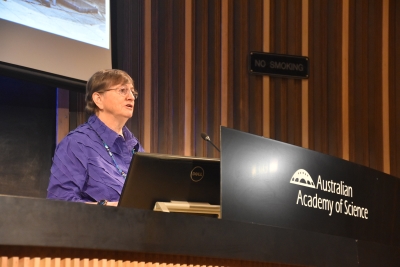
The recipient of the 2020 Macfarlane Burnet Medal Professor Marilyn Renfree gave her associated lecture, outlining how she came to be a world authority on marsupial reproduction and development.
There were also Premier Honorific awards for Professor Steve Simpson of The University of Sydney and Dr Liz Dennis of CSIRO, as well as recognition for those making outstanding contributions to science early in their careers.
Recipients of career honorifics included scientists who’ve transformed our understanding of the biological basis of breast cancer, those using light as a ‘molecular surgical tool’, and those illuminating how deposits of copper and gold form within the hydrothermal systems of volcanoes.
Mid-career and early-career awardees included trailblazers who introduced STI and COVID-19 point-of-care testing in remote Aboriginal communities, are leading international efforts to model the concentrations of atmospheric pollutants, and identifying the source locations of fast radio bursts in distant galaxies. Read about their work.
In the afternoon, Professor Tom Calma led a workshop for all attendees to discuss how their practices can be enriched by effective and meaningful engagement with Aboriginal and Torres Strait Islander knowledge holders and contemporary science practitioners.
Professor Calma is Chancellor of the University of Canberra and a descendant of the Kungarakan and Iwaidja tribal groups. He was elected as a Fellow of the Academy in 2022, having championed the improvement of Indigenous peoples’ health, education, and justice for over 45 years.
They also discussed how researchers can help to build a more inclusive and diverse science sector, with other Indigenous scientists sharing their experiences of working within the Western science paradigm.
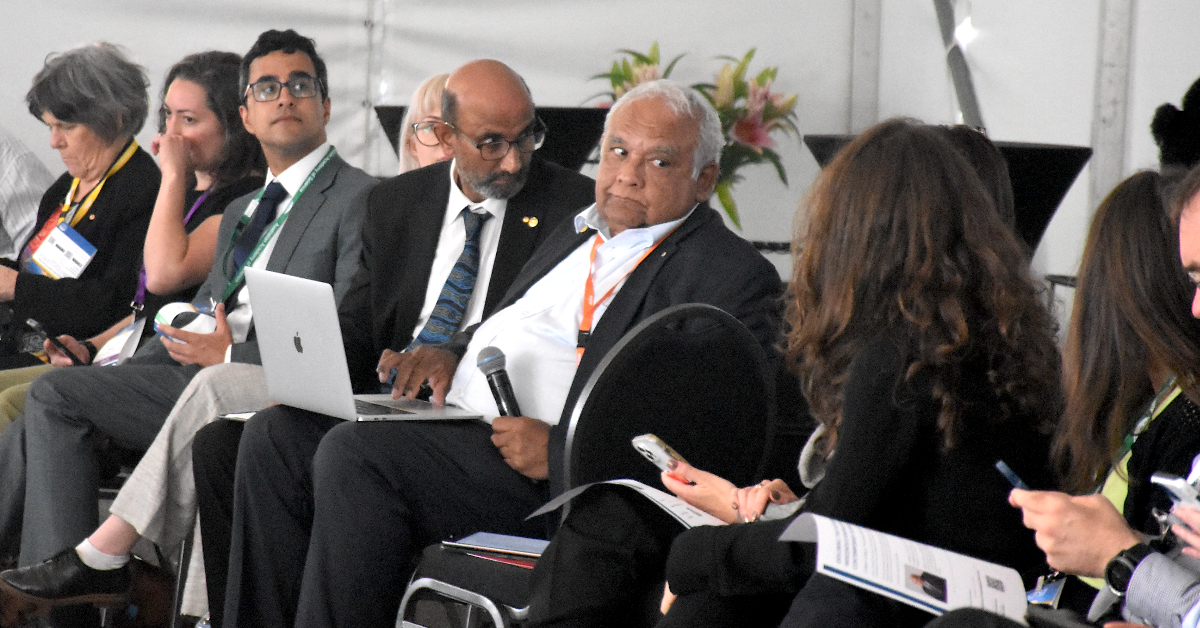
Finally, after Canberra had treated its visitors to some icy winds and low temperatures over the previous few days, the sun came out.
Attendees made the most of the warmth, catching up at the picnic tables outside the Shine Dome, and continuing to enjoy the ever-popular gelato cart!
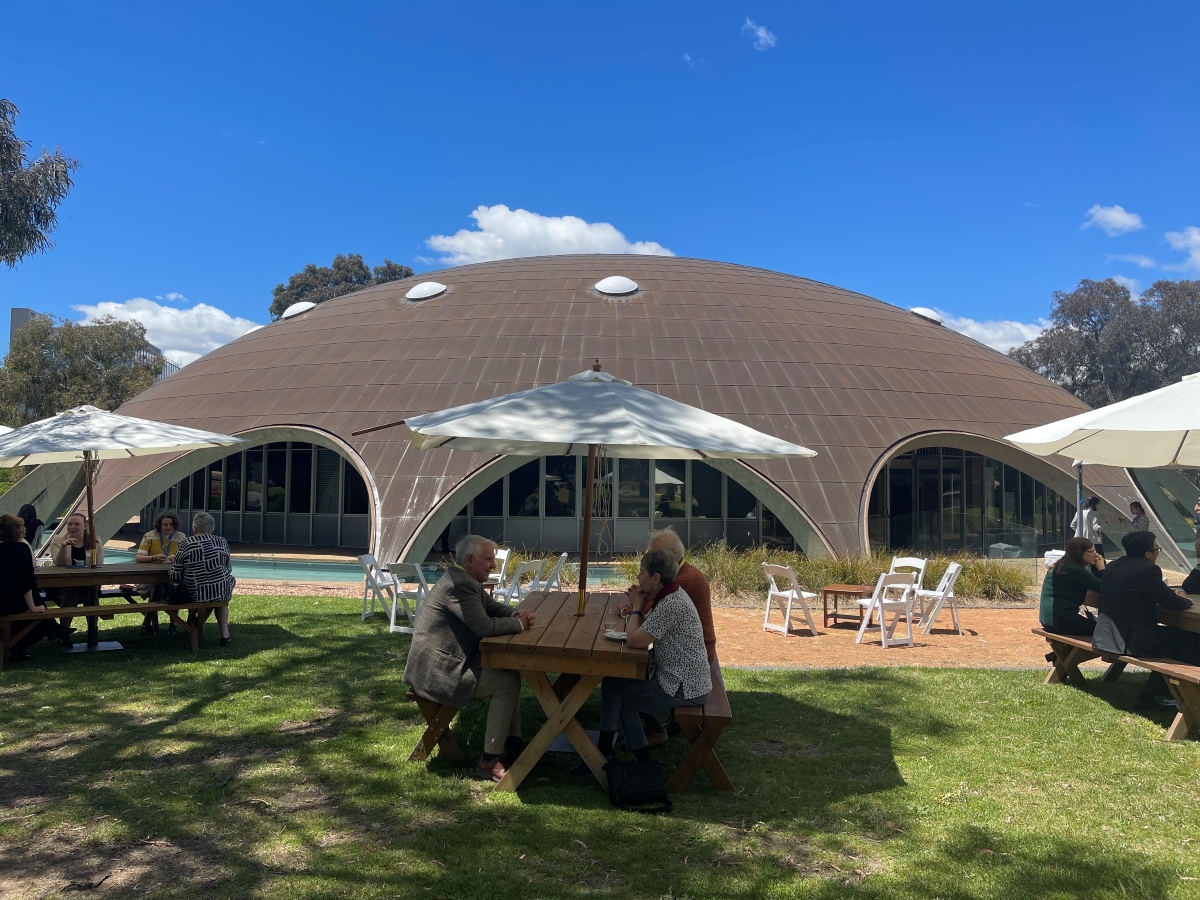
The second day of Science at the Shine Dome focused on the Academy Fellows elected this year. They spoke passionately and about their life’s work and achievements, acknowledged the people who have supported them on their journey of discovery, and shared their thoughts about possible futures for Australia and the world.
Many in-depth interviews were also filmed with Fellows—don’t miss them!
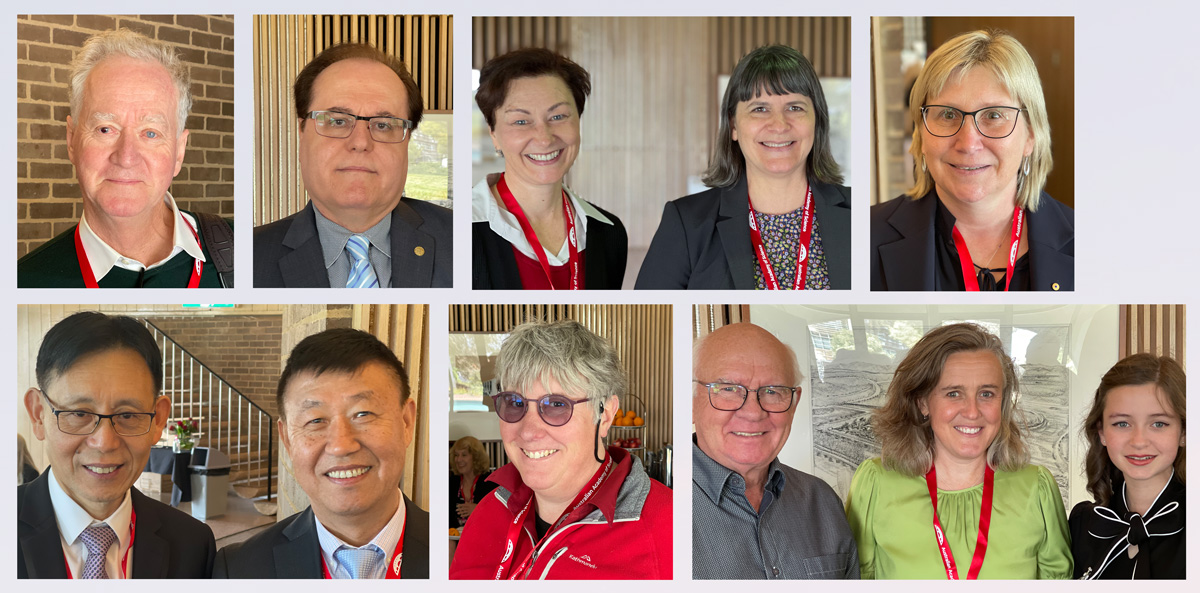
From top left
Professor Peter Langridge “Food-wise, wheat is the most important plant for humanity and it’s great to work on—the genome is so flexible you can break and re-join it. Working with plants is fantastic; they can do so many things and they are the basis on which all life depends.”
Professor Albert Zomaya “For me, it’s a humbling experience when you are watching the talks from people who are at the forefront of their fields. It’s great to see the depth and breadth of research here today—wow! My research in computer science goes all the way from the theoretical to the practical. It has now transitioned into changing people’s lives.”
Professor Kate Smith-Miles “We would never approve pharmaceutical drugs without a clinical trial, but there are very few regulations for algorithms. My work tests algorithms to help improve accuracy.”
Professor Catherine Greenhill “It’s great that Fellows over the last three years get to be here in person and be recognised for their achievements. We live in a networked world and understanding random graphs—what I work on—can help us to understand these networks.”
Professor Ute Roessner “I’m excited to be a Fellow; humbled to be amongst all these other scientists. It’s good to celebrate the wonderful plant science happening. [My science] uncovers the chemical diversity of life, which is astonishingly complex.”
From bottom left
Dr Wenju Cai “I use science to make predictions that minimise damage and maximise adaption—in a sense I predict the future. It is eye-opening being here, there is so much science across so many different areas.”
Professor Huijun Zhao “Science makes you feel younger; makes you feel useful. It’s wonderful to see all my colleagues and friends—finally we get to see each other again!”
Dr Beth Fulton “There is lots to learn—I’m surrounded by such smart people, it’s really amazing. [From my research], making copies of the world inside a computer we can figure out how to have a sustainable and healthy future without using up our current one.”
Professor Naomi McClure-Griffiths, with father David and daughter Madeleine “I’m looking forward to signing that book!” David said, “I’m extremely proud of Naomi. Ever since she was a small child she was interested in science – this is the ultimate recognition as far as I’m concerned. I’m very proud she became a scientist.”
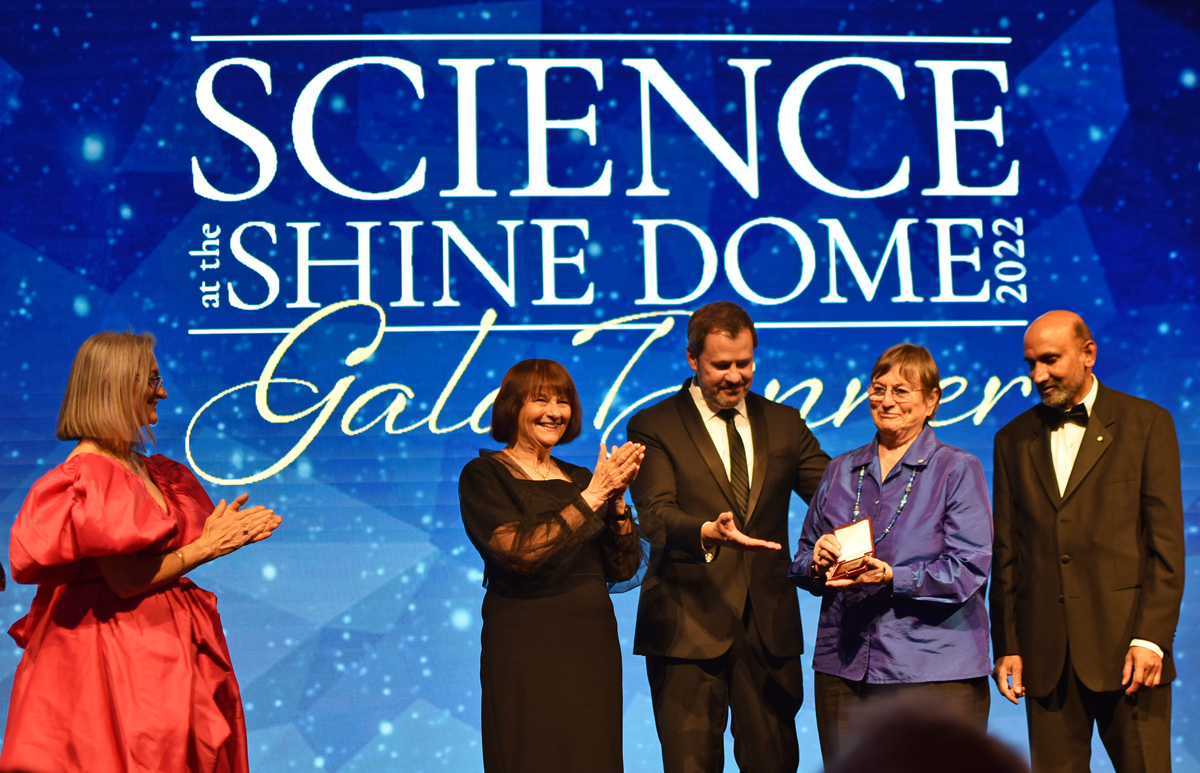
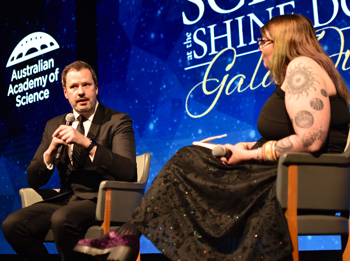
More than 400 scientists and science supporters attended the Academy’s annual gala dinner on Wednesday night at the Great Hall of Parliament House. The evening was hosted by Academy Council members Professor Lyn Beazley and Professor Frances Separovic.
One of the highlights of the evening was a conversation on stage between Karlie Alinta Noon, a Gamilaroi yinarr woman and astronomy PhD candidate and lecturer from the Australian National University, and the Minister for Industry and Science the Hon Ed Husic MP. Other highlights were the presentation of the Academy’s most prestigious medals: the 2020 Macfarlane Burnet Medal to Professor Marilyn Renfree and the 2022 medal to Professor Steve Simpson; the 2021 Matthew Flinders Medal to Professor Andrew Holmes; and the 2021 Ruby Payne-Scott Medal to Professor Cheryl Praeger and the 2022 medal to Dr Liz Dennis.
During the evening the Academy paid tribute to iconic ABC broadcaster and Academy Fellow, Professor Robyn Williams, and showed two videos to mark his nearly five decades of dedication to reporting, promoting and exploring science for the ABC. Watch the second video.
The first day of Science at the Shine Dome was a major celebration of Australian science as more than 60 leading scientists, covering fields from Antarctic life to the evolution of our galaxy, were formally admitted to the Academy.
Also celebrated were the recipients of the Prime Minister’s Prizes for Science, with a breakfast in Canberra’s iconic Shine Dome. The breakfast followed the official prize ceremony at Parliament House on Monday night, where Academy Fellow Professor Trevor McDougall took home the 2022 Prime Minister’s Prize for Science for his research on the role the ocean plays in transferring heat around the globe.
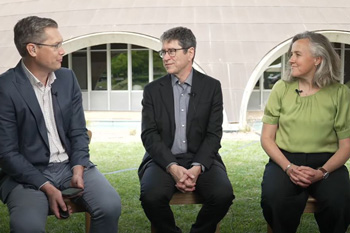
Science at the Shine Dome was opened with a Welcome to Country by Ngunnawal Elder Aunty Violet Sheridan. During the day we saw 60 Fellows elected in 2020, 2021 and 2022 sign the Charter Book, signifying their formal admission to the Academy. Two 2019 Fellows were also able to sign the book. A video was shown for each new Fellow to as an introduction to their science.
For the very first time, the Academy is enriching the experience of those watching online by broadcasting live interviews with scientists and other attendees from the grounds of the Dome. These fascinating discussions are revealing more about each person’s research, what drives them to discover new things, and their interests outside of science. Highly recommended watching!
The work of the 2020 Fellows includes pioneering research into the colour vision of animals that’s improved the performance of digital cameras, identifying the cause of mass frog extinctions across the globe, and the first commercialisation of quantum communication.
See photos and videos for the 2020 Fellows.
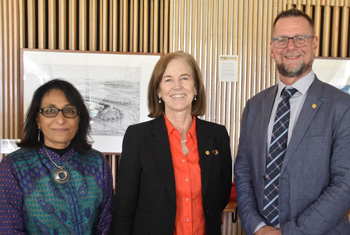
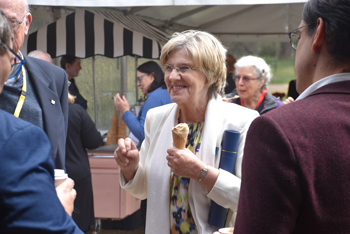
The achievements of the Fellows elected in 2021 have myriad benefits to science and society—from helping to mitigate the worst impacts of regional climate extremes to improving weather forecasting.
See the photos and videos for the 2021 Fellows.
During a short break in proceedings, the Fellows proved they weren’t put off by the unseasonally cool weather, taking time to mingle and enjoy a scoop of gelato.
The final admissions were the 2022 Fellows, including Professor Tom Calma, a descendant of the Kungarakan and Iwaidja tribal groups and the first Fellow elected to the Academy who identifies as an Aboriginal person.
See the photos and videos for the 2022 Fellows.
Professor Jiang Lei, a chemist and materials scientist at the Chinese Academy of Sciences, was also at the Shine Dome to be admitted as a Corresponding Member.
The 2022 cohort marks the first time gender parity was achieved in the Academy’s annual election of new Fellows.
The day concluded with a cocktail soiree held in a marquee near the Academy’s other historic building, Ian Potter House.
Download the event program (PDF 4.3MB)
Twitter: #ShineDome22 and Academy.
© 2026 Australian Academy of Science